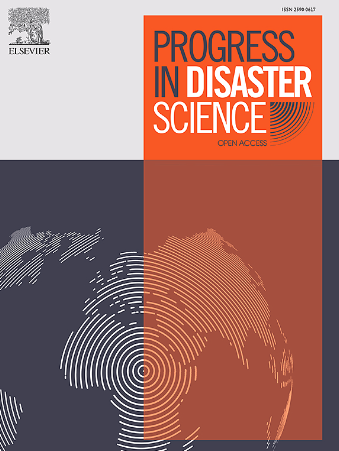A combined fleet size and mix vehicle routing model for last-mile distribution in disaster relief
IF 3.8
Q3 ENVIRONMENTAL SCIENCES
引用次数: 0
Abstract
Disasters pose a significant challenge for last-mile operations, straining emergency logistics systems' ability to provide efficient aid and support. In this context, a Fleet Size and Mix Vehicle Routing Problem for Disaster Management (FSMVRP-DM) is formulated, incorporating a fleet composition decision tailored to the specifics of disaster relief logistics. The model aims to optimize routing and analyze fleet decisions to minimize the sum of operating costs and population deprivation costs. Moreover, a prioritization approach is introduced to monitor deprivation time during transport resource scarcity, adjusting routes periodically to prevent extended supply gaps and minimize suffering costs. In addition, a case study is conducted in the German state of Baden-Württemberg to illustrate the potential applicability of the model. The findings highlight the advantages of integrating diverse and innovative fleet types, such as drones, and prioritizing the supply of multiple demand points when resources are scarce. Overall, the research offers decision support for authorities by enhancing information transparency, facilitating resource management, strengthening the effectiveness of disaster response capabilities, and providing resilient and adaptive strategies for last-mile distribution.
救灾最后一英里分配的组合车队规模和混合车辆路径模型
灾害对最后一英里行动构成重大挑战,使应急后勤系统提供有效援助和支持的能力受到限制。在此背景下,制定了灾害管理的车队规模和混合车辆路线问题(FSMVRP-DM),并根据救灾物流的具体情况制定了车队组成决策。该模型旨在优化路线和分析车队决策,以最小化运营成本和人口剥夺成本之和。此外,引入了一种优先排序方法来监测运输资源稀缺时的剥夺时间,定期调整路线以防止供应缺口扩大并最大限度地减少痛苦成本。此外,在德国巴登-符腾堡州进行了一个案例研究,以说明该模型的潜在适用性。研究结果强调了整合无人机等多种创新机队类型以及在资源稀缺时优先供应多个需求点的优势。总体而言,该研究通过提高信息透明度、促进资源管理、加强灾害响应能力的有效性以及为最后一英里分配提供弹性和适应性策略,为当局提供决策支持。
本文章由计算机程序翻译,如有差异,请以英文原文为准。
求助全文
约1分钟内获得全文
求助全文
来源期刊

Progress in Disaster Science
Social Sciences-Safety Research
CiteScore
14.60
自引率
3.20%
发文量
51
审稿时长
12 weeks
期刊介绍:
Progress in Disaster Science is a Gold Open Access journal focusing on integrating research and policy in disaster research, and publishes original research papers and invited viewpoint articles on disaster risk reduction; response; emergency management and recovery.
A key part of the Journal's Publication output will see key experts invited to assess and comment on the current trends in disaster research, as well as highlight key papers.
 求助内容:
求助内容: 应助结果提醒方式:
应助结果提醒方式:


